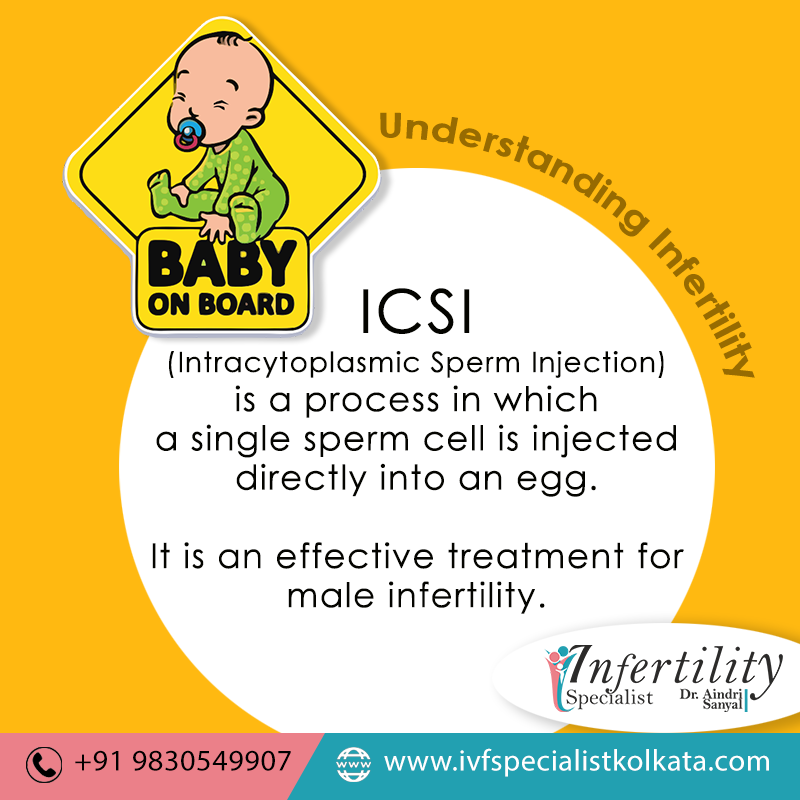
Male infertility is a term generally used by doctors if a man hasn’t been able to get a woman pregnant after at least one year of trying. Male infertility is a result of low sperm production, abnormal sperm function, or blockages that prevent the delivery of sperm. The causes can be classified into the following categories:
- Absence of sperm in the semen possibly due to a blockage
- Low sperm count, poor sperm quality, and/or abnormal sperm shape and movement
- Sperm unable to penetrate through the outer layer of the egg or produce anti-sperm antibodies
- Immunological or genetic disorders
Several treatments are available for improving the chances of conception in men suffering from infertility. These usually include intrauterine insemination (IUI), donor insemination (DI), intracytoplasmic sperm injection (ICSI), and testicular sperm retrieval (TESA). Intracytoplasmic sperm injection (ICSI) allows the egg and the sperm to be brought together directly, facilitating fertilisation. A sperm that has low motility or poor morphology is likely to have a greater possibility of achieving this through ICSI.
Generally, 15 million or 1.5 crores per millilitre is considered to be the normal sperm count. Below 10 million per millilitre is considered poor. Movement is rated from 0-4 and a score of 4 is considered to be good. The size and shape of the sperm can affect the ability of sperms to fertilize an egg. 40% is considered normal. Fertility treatment is required if tests show that sperm count, motility, or shape has dropped beyond the abovementioned counts.
A sperm count of 80 lakhs to 1 crores, motility of 30%, and 4% normal form are considered to be the threshold to undergo Intrauterine Insemination (IUI). However, if the sperm count, motility, and forms drop further, then intracytoplasmic sperm injection (ICSI) remains the only option. It may so happen that a man may have sufficient sperm count but not enough amount of mature sperms. In such cases, testicular sperm retrieval (TESA) is first used to retrieve a small amount of testis tissue to recover sperm followed by ICSI, injecting the sperm directly inside the egg.
In the year 1978, Dr. Subhash Mukhopadhyay created the world’s second and India’s first test-tube baby. During 1981-86, along with Dr. Baidyanath Chakrabarti gave birth to the second test-tube baby using IVF. And in March 1995, under the sole stewardship of Dr. Sudarsan Ghosh Dastidar, the first ICSI baby was delivered.


